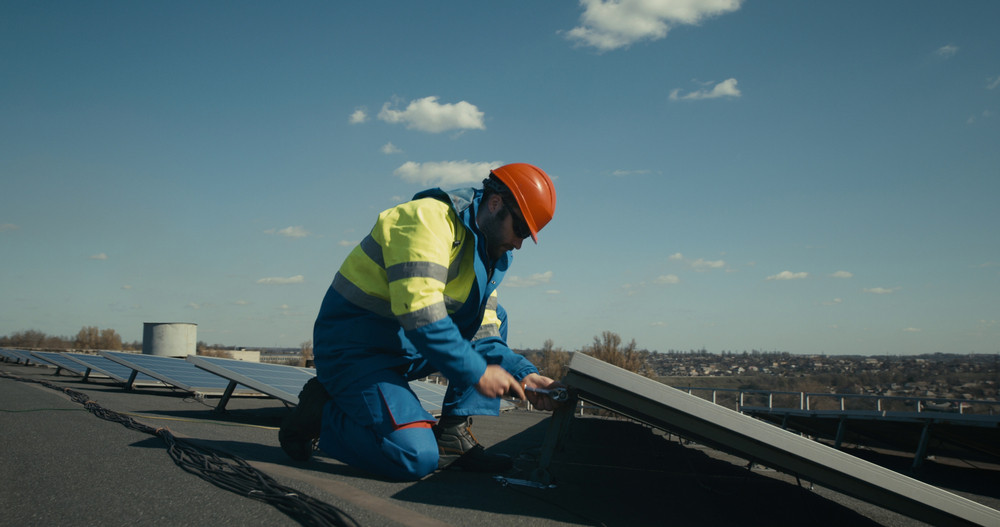
Highlights
- Getting multiple estimates helps compare pricing, materials, and scope.
- It reveals differences in contractor professionalism and communication.
- Helps identify outliers and avoid scams or underbids.
- Gives leverage for negotiation and better warranty clarity.

Why Roofing Estimates Matter
When it comes to replacing or repairing your roof, the cost can be significant—and so can the risks of making a poor choice. That’s why homeowners often ask, “Should I get multiple roofing estimates?” The short answer is yes. Gathering at least three estimates from licensed roofing contractors allows you to make informed decisions about cost, timeline, materials, and service quality. A roof is one of your home’s most vital components. It protects against weather, insulates against energy loss, and adds curb appeal and resale value. With such a critical function, no part of the project should be rushed or done without proper vetting. Each estimate offers a unique perspective on how contractors approach your project. You may find differences not only in pricing but also in proposed materials, labor breakdowns, and cleanup procedures. These variations often reveal more than the numbers—they reveal a contractor’s transparency, attention to detail, and industry knowledge. Comparing estimates also helps you gain a better understanding of what standard pricing looks like in your area, so you can avoid being overcharged or misled. For something as important as your roof, investing the time upfront can protect your investment long-term.
Understanding the Value Behind Each Estimate
Not all estimates are created equal. Some contractors may provide only basic pricing without much detail, while others offer itemized breakdowns, photos, and even digital diagrams of your existing roof. According to the National Roofing Contractors Association, a detailed estimate should include information about shingle brands, underlayment, flashing replacement, ventilation plans, labor, and warranty terms. When you have multiple estimates, it’s easier to spot which contractors cut corners or don’t account for critical aspects of the job. You might find that the lowest bid excludes elements like debris removal, ridge vent upgrades, or only offers a minimal warranty. These omissions could lead to additional expenses later or compromised workmanship that doesn’t last. On the other hand, the highest bid might reflect premium materials, a longer warranty, and better cleanup services. By comparing the fine print across multiple proposals, you’ll develop a clearer picture of what you’re really getting—and paying for. This can be especially helpful for homeowners unfamiliar with roofing terminology or construction practices, as it adds much-needed context to a complex investment. It’s not just about price—it’s about the value and peace of mind the contractor brings to your home improvement experience.
Spotting Red Flags and Avoiding Scams
One major benefit of collecting multiple estimates is that it helps you avoid predatory practices in the roofing industry. A contractor that pushes for an immediate signature, insists on upfront cash, or dramatically underbids others is a red flag. Lowball bids often lead to shoddy work, unexpected add-on costs, or outright fraud. When you have three or more estimates in hand, it becomes easier to identify unrealistic pricing or vague contract language. If one bid is significantly cheaper than the rest, ask why. It may indicate that the contractor lacks licensing, insurance, or plans to use subpar materials that won’t last. Trustworthy professionals should be able to explain the reasoning behind their costs, show proof of credentials, and give you written references. The comparison process also empowers you to ask more informed questions and spot inconsistencies others might miss. Taking the time to gather multiple quotes protects you from surprises and helps weed out contractors who aren’t operating ethically or professionally. Your home deserves protection from not only weather—but also shady business practices.
Evaluating Professionalism and Communication
Beyond the numbers, multiple estimates give you insight into how different contractors treat their customers. Communication style, punctuality, and willingness to explain details are crucial signs of professionalism. Did the contractor show up on time? Did they listen to your concerns, or rush through the consultation? Did they follow up promptly with a clear, organized proposal? Roofing is a collaborative effort, and you’ll want a contractor who values clarity and consistency throughout the project. In contrast, vague or dismissive behavior during the quoting phase can foreshadow poor follow-through later. Reviewing multiple quotes lets you assess each roofer’s professionalism and choose someone you’re comfortable working with over several days or weeks. You’ll also see how well they explain warranties, handle cleanup expectations, and outline the timeline—all crucial components of a successful project. A contractor who invests time in the estimation phase often brings that same attention to detail to the actual work. The professionalism you experience upfront often reflects how they’ll treat your home, your time, and your concerns throughout the entire process.
Leverage for Negotiation and Better Term

Another benefit of seeking multiple estimates is negotiation power. When you understand what the market rate is for your roofing project, you’re in a stronger position to discuss cost-saving opportunities or upgraded features. For example, if two contractors offer similar scopes of work but one includes a better warranty or more durable materials, you can use that information to ask another roofer to match or improve their offer. Multiple estimates also help clarify what’s negotiable—such as timeline flexibility, disposal fees, or financing options. According to industry professionals, some contractors offer seasonal promotions, referral credits, or free upgrades to more energy-efficient materials that could improve your home’s resale value. With multiple bids in hand, you’re no longer at the mercy of a single quote—you’re an informed consumer making a competitive decision based on transparency and choice. Even if you’re not comfortable negotiating directly, the act of having several proposals creates natural competition and gives you room to advocate for yourself without sounding aggressive or uninformed. This added confidence is invaluable during big home improvement projects. Knowledge is power—and in roofing, it can lead to better deals, longer warranties, and better results.
Making the Final Decision with Confidence
Once you’ve reviewed your estimates side-by-side, take time to consider which contractor offers the most value—not just the lowest price. Look for clarity, consistency, and professionalism across the proposal. Ask yourself: Does this contractor explain what happens if hidden damage is found during the tear-off? Are the warranties clearly outlined and easy to understand? Do they clean up daily or only at the end? These details matter because roofing work can affect not only your structure but also your landscaping, gutters, and interior if handled poorly. Also, consider online reviews and references. A great estimate paired with poor customer service history should be approached cautiously. In contrast, a slightly higher bid from a contractor with glowing testimonials and years of local experience might be the better investment. According to Roofing Contractor Magazine, customers who gather three or more estimates tend to report higher satisfaction and better long-term results. Ultimately, multiple roofing estimates aren’t just about saving money—they’re about protecting your home, peace of mind, and financial future with a choice you feel confident about. The extra time spent comparing options is a small investment that can lead to better workmanship, fewer surprises, and longer-lasting protection for your home. Taking this step not only helps you save money—it helps you build trust in the team working on one of your most valuable assets.
